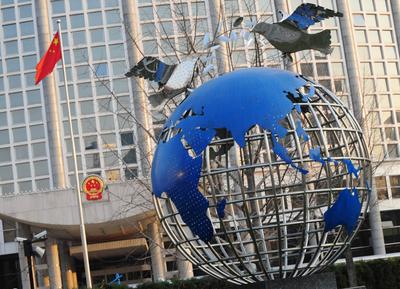These cycles of cooperation and non-cooperation that characterise China’s foreign policy should bear closer scrutiny.
There are five competing — but not mutually exclusive — explanations of China’s foreign policy in South and Northeast Asia. These explanations relate to different ways of understanding China’s intentions and motivations and, by implication, different ways of engaging with a rising China.
First, the ‘learning-by-doing’ hypothesis presumes the Chinese leadership is sincerely committed to a policy of peaceful rise, and suggests that as an emerging global power China is still learning to conduct its foreign policy. Mistakes and misadventures are not unlikely at this early stage, particularly when the sole global power is preoccupied with domestic crises and the international system is in a state of flux. Aggressive posturing results from misunderstanding and miscalculation, whereas cooperative gestures correct inadvertent or unacceptable damages. The cycles of cooperation and non-cooperation are unlikely to persist beyond the short run, after which Chinese foreign policy is more likely to be balanced.
Second, the ‘hawk-dove’ hypothesis presumes the Chinese leadership is divided over policy matters, and suggests that conflicts between hawks and doves result in uneven policies. But such conflicts are an inextricable part of collective decision making in diverse societies.
Third, the ‘bargaining’ hypothesis presumes a Chinese leadership committed to cooperative arrangements and suggests that occasional non-cooperation helps China obtain better shares commensurate with its growing power. China will become a status quo power after its economy stabilises. Meanwhile, the periods of non-cooperation will be relatively short. Self-adjusting international institutions should be sufficient to check Chinese aggression by increasing returns from cooperation.
Fourth, the ‘deliberate expansion’ hypothesis presumes an insincere Chinese leadership. It suggests that Chinese aggression gradually extends the limits of its neighbours’ tolerance for its growing power, while peaceful overtures help cement the new limits as status quo. China will continue to rely on this mixed strategy until it achieves its potential. In the meantime, only a military alliance can deter Chinese aggressions.
Fifth, the ‘structural’ hypothesis presumes that, contrary to its popular image, the present Chinese leadership has limited agency, and factors over which it has insufficient control often influence its decision making. It suggests that a constellation of regional political, historical and technological factors — along with its domestic problems — constrains China’s hegemonic ambitions. For instance, China is much larger than all its East Asian neighbours put together. The consequent power differentials translate into a sense of insecurity in its neighbourhood, which is further accentuated by unresolved boundary disputes, differences in political and economic systems, and divisive historical memories. And China’s insecure neighbours are liable to invite external intervention that constrains Beijing’s ability to achieve its foreign policy goals even within its own neighbourhood. But the sunk costs incurred by earlier Chinese administrations in cultivating rogue regimes as diplomatic and military assets make China — which continues to be structurally and technologically incapable of projecting power abroad — reliant on such regimes as force-multipliers in its international dealings.
So, the interplay between geostrategic constraints and the availability of cheap force-multipliers explains China’s foreign policy in South and Northeast Asia. Access to force-multipliers encourages unilateralism on regional issues whereas regional political and military-technological constraints compel China to tread with caution. While China’s regional political constraints will continue to restrict action in the long run, its economic and military-technological constraints will relax in the medium to long run. But newer constraints will inevitably come to bear, as overseas strategic investments wither and helpful regimes weaken or turn hostile — as seems to be happening in Myanmar. In the foreseeable future, then, instances of direct Chinese aggression, if any, will be brief because of structural constraints.
A few comparative observations on the competing explanations are needed. First, the fifth explanation subsumes the second if strategic constraints support the ‘doves’, while the availability of overseas force-multipliers sustains the ‘hawks’. Second, the first explanation is invalid in the case of South and Northeast Asia because China has had six decades to fine-tune its policy, even though it emerged as a major power only recently. Third, the first two explanations explain the cycles of cooperation and non-cooperation as by-products of phenomena that are otherwise innocuous from the international perspective. According to the third and fourth explanations the cycles arise from deliberate choices of leaders. But the fifth invokes the interplay between structural constraints and overseas force-multipliers, which the current Chinese leadership cannot eliminate in the short run. Fourth, while a combination of these explanations may help explain specific developments in China’s foreign policy, the fifth explanation is the most dependable guide to long-term policy making because it relies on objectively verifiable structural factors that are persistent in nature. In contrast, the first two explanations invoke relatively transient factors, whereas the third and fourth depend critically on inferences about the intentions of Chinese leadership.
The fifth explanation suggests that while instances of direct aggression, if any, will be brief China will continue to rely on overseas force-multipliers for as long as possible in order to indirectly contain its competitors in South and Northeast Asia. So, there are limits to what countries in conflict with China can achieve through diplomatic engagement — despite which they will face Chinese aggression supported, and limited, by structural factors. However, nimble defences should be sufficient to deal with occasional Chinese aggressions. Foreign and defence policies based on an understanding of Chinese policy contrary to the ‘structural’ hypothesis will result in regional neighbours overinvesting in defence infrastructure and pursuing inappropriate diplomatic initiatives like the abortive quadrilateral dialogue.
Vikas Kumar is Assistant Professor at Azim Premji University, Bangalore. A shorter version of this article first appeared here at Future Directions International.

